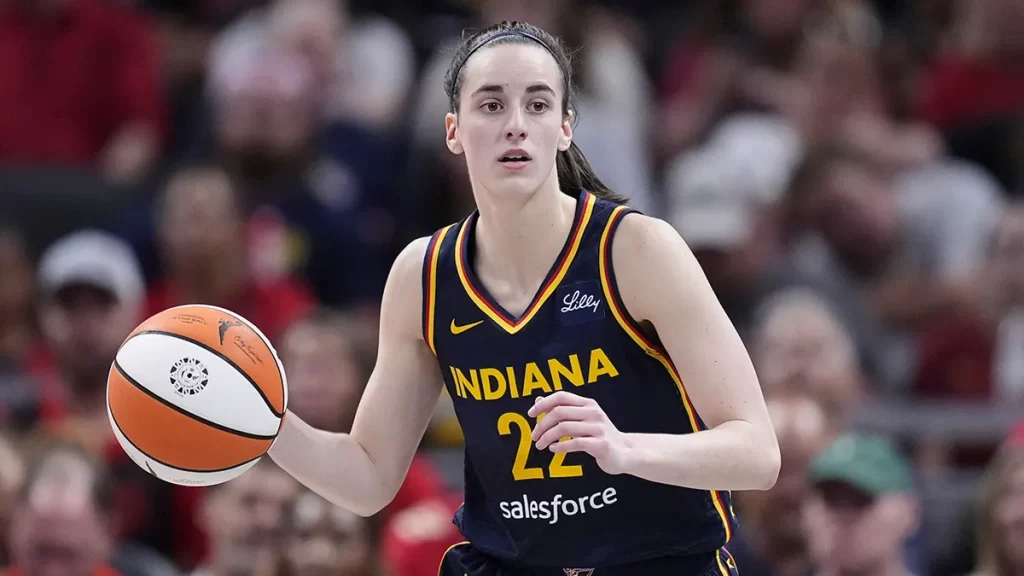As Final Four weekend nears and the 2024-25 college basketball season comes to an end, the growth of women’s sports is on full display once again. Despite a drop in viewership from last year’s NCAA Tournament featuring Caitlin Clark, ESPN reported that the first two rounds averaged the second-highest audience through this point since 2009. The second round averaged nearly a million viewers across its platforms, up 60% from 2023 and only behind 2024. Beyond women’s basketball, other women’s sports have seen significant growth in recent years as well.
It’s time we give women’s sports the respect and attention they deserve. Female athletes put in the same amount of effort on a daily basis as their male counterparts. They, too, are receiving the same, if not more, NIL money on average then the guys. Look at Livvy Dunne’s 5.3 million Instagram followers, Caitlin Clark’s success, or even JuJu Watkins as an underclassman.
Female athletes are still competing for the same goal: a college national title. At the end of the day, the job between the two genders really isn’t all too different and shouldn’t be treated as such by the fans and media.
Women’s basketball reporter Michelle Smith Mcdonald emphasized the importance of telling everyone’s story, including female athletes, in a recent conversation with ASU sports journalism students.
Women’s sports has made huge strides in the last year. Girls’ flag football is on the brink of becoming an official NCAA sport with at least 65 schools already sponsoring it at the club or varsity level, including Arizona State. Arizona is one of 28 states are on the run either as a pilot program or an official state sanction, and participation more than doubled in its second year with over 100 schools participating in the fall 2024 season, up from 50 in 2023.
NCAA women’s volleyball is also experiencing exponential growth as attendance reaches an all-time high. In 2023, Nebraska shattered the all-time college volleyball record and world record for a women’s sporting event when 92,000 fans packed into the Huskers’ football stadium for a match against the in-state rival. The previous world record was 91,648 at a 2022 UEFA Women’s Champions League match. And the 2024 NCAA volleyball final featuring Penn State and Louisville broke the indoor record with nearly 22,000 in attendance.
Last but not least, softball as a whole is seeing a jump in popularity, due in large part to the contributions from MLB Softball ambassadors Jennie Finch, Natasha Watley and Lauren Gipson (Chamberlain). All three have been instrumental to MLB’s softball efforts, and Gipson spent the first two seasons as commissioner of the Women’s Professional Fastpitch league. She has an impressive resume of her own, previously holding the home run record for college home runs and a national champion with Oklahoma.
Speaking of Oklahoma, the 2024’s Women’s College World Series delivered the most-watched season on record. An average of two million viewers tuned in for the Finals, en route to the Sooners’ four-peat – the first of its kind. Other notable ratings from the 2024 season include the most-watched Super Regionals since 2021 (519,000 viewers) and the most-watched regular season since 2015 (190,000).
“I feel like we are starting to reach new heights, breaking new doors,” Watley told MLB.com in July. “If you paid attention to the Women’s College World Series a couple months ago, you can really see the momentum picking up in our sport. I feel like we are on the brink of a thriving pro league.”
Attendance during the season’s final games set a new NCAA Championship Finals record as 12,324 fans were on site at Devon Field in Oklahoma City. These unprecedented statistics are a positive sign for the growth of the sport, in light of Oklahoma’s dominance in the sport. A similar growth was seen in the NBA during the 2022 Finals when the Golden State Warriors won their fourth NBA title since 2015, averaging 12.3 million viewers – a 24% increase from the Bucs/Suns Finals a year earlier.
All things considered, these are all positive signs for the future of women’s sports in a male dominated society. While they may have the same reach as college football, the NFL or men’s soccer, interest is growing, and by continuing to promote the game’s top talent, the ratings will continue to climb.
From a media perspective, we as journalists must continue to encourage diversity in their coverage by telling the stories behind women’s sports. There’s just as many storylines around women’s sports than men’s. By highlighting those stories and major events, we continue to draw eyes on female athletes.
Fans can be part of the change too by continuing to tune in to prime matchups, supporting their local programs’ NIL collectives, and attending a game with their friends and family.


